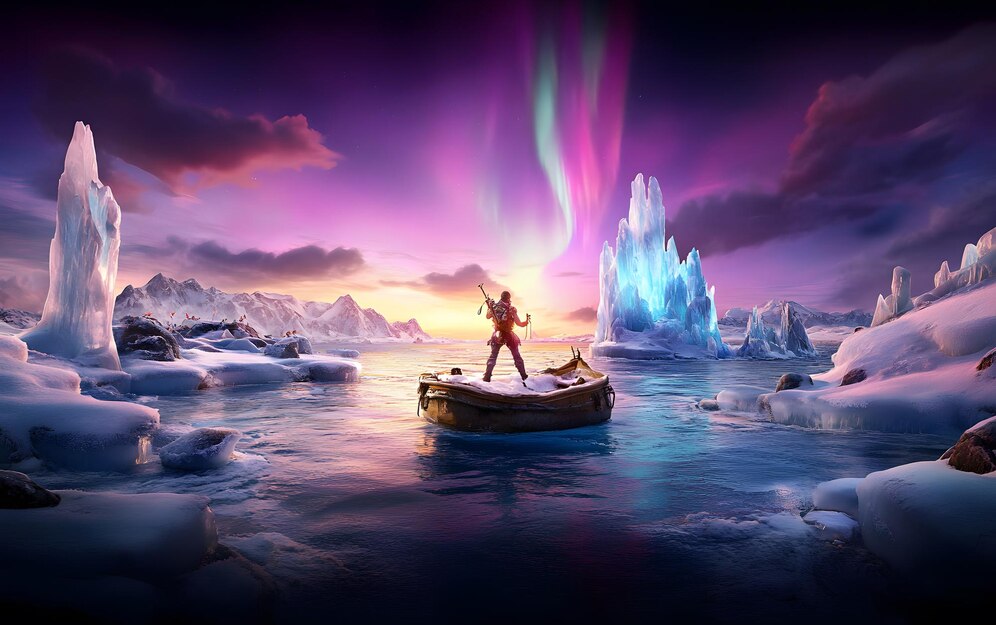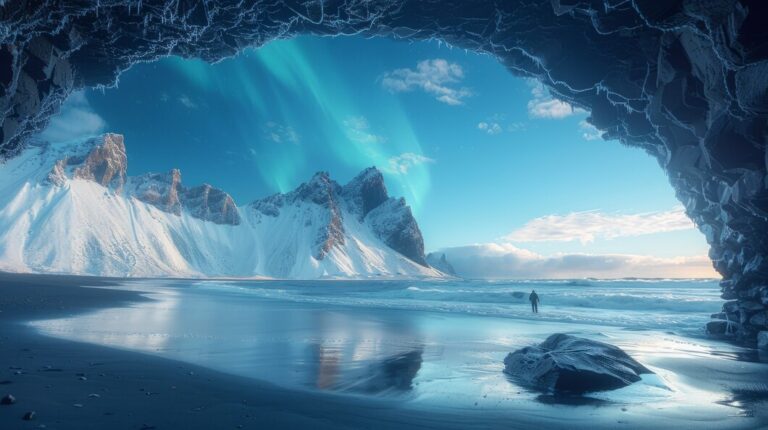Iceland Through the Eyes of a Traveler
Nestled in the North Atlantic, Iceland has earned its place on the bucket lists of travel enthusiasts, nature lovers, and adventure seekers worldwide. Known as the “Land of Fire and Ice,” this enchanting island captivates its visitors with stark contrasts—roaring volcanoes and serene glaciers, ancient Viking traditions and modern minimalism, untamed landscapes and cutting-edge cities. The magic of Iceland lies not only in its breathtaking beauty but also in the stories etched into its every corner.
If you’ve been dreaming of Icelandic adventures, this blog is your guide to uncovering its unparalleled wonders. From exploring natural marvels to learning about eco-conscious travel tips, here’s everything you need to prepare for—and fall in love with—your Iceland travel experience.
The Land of Fire and Ice: Iceland’s Natural Wonders
Incredible Geology and Stunning Landscapes
Iceland isn’t called the “Land of Fire and Ice” without reason. It’s a geological playground where contrasting elements collide in spectacular fashion. The island is home to over 130 active and dormant volcanoes, sprawling glaciers that cover around 11% of its surface, and an array of geothermal hot springs perfect for a warm soak.
One of the most famous volcanic sites in Iceland is Eyjafjallajökull, a name that might be tricky to pronounce but is unforgettable in its beauty. Meanwhile, for glacier enthusiasts, Vatnajökull stands out as Europe’s largest glacier, offering breathtaking views and thrilling exploration opportunities. Geysers, such as Strokkur, erupt majestically every few minutes, spraying boiling water high into the air, providing visitors with a spectacle unlike anything else in the world.
The Golden Circle
No trip to Iceland is complete without visiting the Golden Circle—a 300-kilometer route packed with three awe-inspiring landmarks. This route starts with Þingvellir National Park, a UNESCO World Heritage Site where you can walk between two tectonic plates. Next is Geysir, home to thermal geysers and bubbling mud pools. The final stop is Gullfoss, a breathtaking waterfall that will leave you in awe as it cascades into a rugged gorge. The Golden Circle is the perfect introduction to the raw, untouched beauty of Iceland.
Unraveling Iceland’s Rich History and Culture
A Glimpse into Viking Heritage
Did you know that Iceland was settled by Vikings over 1,000 years ago? This heritage forms an integral part of Icelandic identity, evident in the sagas, traditional Norse mythology, and even everyday language. You can experience this history firsthand at the Settlement Exhibition in Reykjavik, where you can explore an original Viking-age longhouse.
Reykjavik—Northern Charm and Modern Culture
Reykjavik, the world’s northernmost capital, offers a fusion of old-world charm and modern aesthetics. Iconic landmarks like Hallgrímskirkja Church and the Harpa Concert Hall showcase unique Icelandic architectural styles. The city is also brimming with museums, art installations, and cultural events like the Reykjavik International Film Festival. Take a stroll along the waterfront to see the Sun Voyager sculpture, which symbolizes dreams of exploration and new beginnings—very fitting for this adventurous land.

The Ultimate Adventure: Exploring Iceland
Planning Your Trip
The best time to visit Iceland depends on what calls to you most. For those seeking the enchanting Northern Lights, aim for the darker winter months (October to March). However, if hiking through lush landscapes or soaking in the midnight sun is more your speed, summer (June to August) is ideal.
Don’t forget the essentials for your Icelandic adventure:
- Waterproof and windproof layers are a must due to the unpredictable weather.
- Rent a 4×4 vehicle for navigating Iceland’s rugged F-roads if you plan to explore outside the cities.
Best Outdoor Activities in Iceland
- Glacier Hiking: Traverse the icy landscapes of places like Sólheimajökull or Skaftafell, led by expert guides who ensure safety and fun.
- Whale Watching: The waters off Iceland’s coast host numerous whale species, making spots like Húsavík and Akureyri prime destinations for unforgettable whale-watching tours.
- Northern Lights Tours: Witnessing the Aurora Borealis in all its glory is a surreal experience. Spotting these celestial displays often requires expert guidance, which is why guided tours are highly recommended.
Sustainable Tourism in Iceland
A Commitment to Nature
Iceland prioritizes environmental preservation. The nation runs almost entirely on renewable energy sources, mainly geothermal and hydropower. Visitors are encouraged to respect the land, stay on marked paths, and adhere to the Leave No Trace principles.
How to Travel Responsibly in Iceland
- Avoid littering and follow marked trails to prevent damage to the fragile terrain.
- Support local businesses and sustainable tour operators.
- Limit the use of plastic by carrying reusable water bottles—many of Iceland’s rivers and taps offer drinkable glacier water.
Traveling mindfully will not only protect Iceland’s natural beauty but also ensure that future generations can enjoy it.
Get Packing for Iceland’s Wonders
From fiery volcanoes to icy glaciers, Viking tales to Northern Lights, Iceland offers an otherworldly escape like no other. It’s a destination where nature takes center stage, history whispers through the land, and sustainability ensures the legacy lives on. Whether you’re an adventure seeker, a culture enthusiast, or a lover of serene landscapes, Iceland promises an experience that will etch itself in your memory forever.
Start planning your Iceland travel today! Share this post with friends and family who dream of Icelandic adventures, and join the global community of travelers keeping this magical land at the top of their must-visit lists.
